 recent
cool books
recent
cool books recent
cool books
recent
cool books
![]() Schneier,
Bruce. Secrets
and Lies: Digital Security in a Networked World. John Wiley and Sons, 2000.
Schneier,
Bruce. Secrets
and Lies: Digital Security in a Networked World. John Wiley and Sons, 2000.
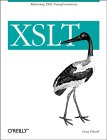
![]() Tidwell,
Doug. XSLT.
O'Reilly & Associates, 2001.
Tidwell,
Doug. XSLT.
O'Reilly & Associates, 2001.
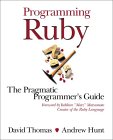 Thomas,
David; Hunt, Andrew. Programming
Ruby: A Pragmatic Programmer's Guide. Addison-Wesley, 2000.
Thomas,
David; Hunt, Andrew. Programming
Ruby: A Pragmatic Programmer's Guide. Addison-Wesley, 2000.

![]() Hunt,
Andrew; Thomas, David. The
Pragmatic Programmer. Addison-Wesley, 1999.
Hunt,
Andrew; Thomas, David. The
Pragmatic Programmer. Addison-Wesley, 1999.

![]() Schwaber,
Ken; Beedle, Mike. Agile
Software Development with SCRUM. Prentice Hall, 2001.
Schwaber,
Ken; Beedle, Mike. Agile
Software Development with SCRUM. Prentice Hall, 2001.

![]() Garrett,
Laurie. Betrayal
of Trust: The Collapse of Global Public Health. Hyperion, 2000
Garrett,
Laurie. Betrayal
of Trust: The Collapse of Global Public Health. Hyperion, 2000
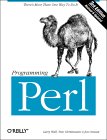
![]() Wall,
Larry; Christiansen, Tom; Orwant, Jon. Programming
Perl (3rd Edition). O'Reilly and Associates, 2000.
Wall,
Larry; Christiansen, Tom; Orwant, Jon. Programming
Perl (3rd Edition). O'Reilly and Associates, 2000.
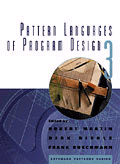
![]() Martin,
Robert; Riehle, Dirk; Buschmann, Frank. Pattern
Languages of Program Design 3 (Software Patterns Series). Addison-Wesley,
1997. This book contains the SCRUM pattern.
Martin,
Robert; Riehle, Dirk; Buschmann, Frank. Pattern
Languages of Program Design 3 (Software Patterns Series). Addison-Wesley,
1997. This book contains the SCRUM pattern.
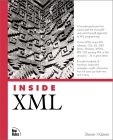
![]() Holzner,
Steven. Inside
XML. New Riders, 2001.
Holzner,
Steven. Inside
XML. New Riders, 2001.
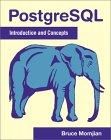
![]() Momjian,
Bruce. PostgreSQL:
Introduction and Concepts. Addison-Wesley Pub Co, 2000.
Momjian,
Bruce. PostgreSQL:
Introduction and Concepts. Addison-Wesley Pub Co, 2000.
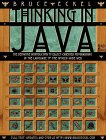
![]() Eckel,
Bruce. Thinking
in Java, 2nd Edition. Prentice Hall, 2000.
Eckel,
Bruce. Thinking
in Java, 2nd Edition. Prentice Hall, 2000.

![]() Boehm,
Barry W et al. Software
Cost Estimation with Cocomo II (with CD-ROM). Prentice Hall, 2000.
Boehm,
Barry W et al. Software
Cost Estimation with Cocomo II (with CD-ROM). Prentice Hall, 2000.
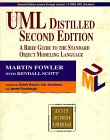
![]() Fowler,
Martin; Scott, Kendall (contributor); Booch, Grady. UML
Distilled, Second Edition; A Brief Guide to the Standard Object Modeling Language.
Addison-Wesley, 1999.
Fowler,
Martin; Scott, Kendall (contributor); Booch, Grady. UML
Distilled, Second Edition; A Brief Guide to the Standard Object Modeling Language.
Addison-Wesley, 1999.

![]() Rouyer,
Jeff. Dynamic
HTML Web Magic. New Riders Publishing, 1998.
Rouyer,
Jeff. Dynamic
HTML Web Magic. New Riders Publishing, 1998.
This book is either not worth your time or a must have! For experienced web developers who need to do cross browser support using DHTML it may be very useful. Check out Jeff Rouyer's site, www.htmlguru.com, to see what you think.
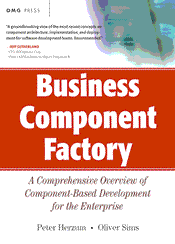
![]() Herzum,
Peter and Sims, Oliver. Business
Components Factory : A Comprehensive Overview of Business Component Development
for the Enterprise. John Wiley & Sons, 1999.
Herzum,
Peter and Sims, Oliver. Business
Components Factory : A Comprehensive Overview of Business Component Development
for the Enterprise. John Wiley & Sons, 1999.

![]() Zimmerman,
Brenda; Lindberg, Curt; PlsekEdgeware, Paul. Edgeware:
insights from complexity science for health care leaders. VHA Inc., 1998.
Zimmerman,
Brenda; Lindberg, Curt; PlsekEdgeware, Paul. Edgeware:
insights from complexity science for health care leaders. VHA Inc., 1998.

![]() Dossey,
Larry. Reinventing
Medicine : Beyond Mind-Body to a New Era of Healing. Harpercollins, 1999.
Dossey,
Larry. Reinventing
Medicine : Beyond Mind-Body to a New Era of Healing. Harpercollins, 1999.
The second, double-blind study of the effect of prayer on hospital patients was published recently. This one was much more tightly controlled than the 1988 study by Byrd. It showed the same result. No change in length of stay. 10% improvement in the prayer group. Dossey, the editor of Alternative Therapies in Health in Medicine has been writing about this for years and taking a lot of flack for it. Looks like he is right so it's worth checking out his latest book. For the research, see:
Harris @S, Gowda M, Kolb JW, et al. A randomized, controlled trial of the effects of remote, intercessory prayer on outcomes in patients admitted to the coronary care unit. Arch Intern Med. 1999;159:2273-2278.
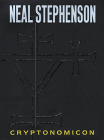
Availability: Usually ships
within 24 hours.
Hardcover - 918 pages rough
cut edition (May 4, 1999)
Avon Books (Trd); ISBN: 0380973464 ; Dimensions
(in inches): 1.98 x 9.65 x 6.80
Amazon.com Sales Rank: 78
Avg. Customer Review:
![]()
Number of Reviews: 180
A good book for anyone interested in e-commerce because e-commerce is, at its root, cryptography and this is the early history of cryptoanalysis. Also a magnum opus, the best book yet by a superb author! Even Jeff Besos is ready this one.
The
Lexus and the Olive Tree
by Thomas
L. Friedman

Availability: Usually ships
within 24 hours.
Hardcover - 394 pages 1 edition
(April 1999)
Farrar Straus & Giroux; ISBN: 0374192030 ; Dimensions (in inches):
1.45 x 9.31 x 6.45
Other Editions: Audio
Cassette (Abridged)
Amazon.com Sales Rank: 49
Avg. Customer Review:
![]()
Number of Reviews: 53
Recommended for anyone interested in the global effects of technology, i.e. anyone doing Web-based software development. To my surprise, this is the best articulation yet of my theory that the Internet caused the Asian economic meltdown (and you haven't seen anything yet). Basically, the free flow of information allows everyone to calculate the national tax, the beaurocratic tax, the corruption tax, and the criminal tax on products. Any tax larger than the average tax in developed nations will result in an appropriate devaluation of the currency. Corruption and criminal taxes are the worst because in addition to artificially raising costs, it increases risk and drives up interest rates further deflating the currency.
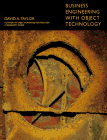
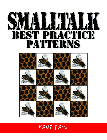

Christensen, Clayton M. The Innovator's Dilemma : When New Technologies Cause Great Firms to Fail. Harvard Business School Press, 1997.
I've gotten more good feedback on this book than any book I have previously mentioned so it goes to the top of the list for the second time. I couldn't even finish my first copy before my boss took it off my hands.
The book describes why the best managed companies run off the edge of a cliff when a disruptive technology (like the Internet) appears on the scene. As Andy Grove says, this is a scary book, because the incentives to provide higher margins for your company cause you to disinvest in disruptive technologies until it is too late - and then you are toast!
I guarantee that all of us are at risk of being toast in today's market. This book is a survival manual!
![]() Matthew
Petrowsky, John M. Osborne. Scriptology
- FileMaker Pro 3.0/4.0 Demystified (Windows 3.1/95/NT & Macintosh OS),
CD-Rom edition Vol 1. Iso Production, 1998. ISBN: 0966087607
Matthew
Petrowsky, John M. Osborne. Scriptology
- FileMaker Pro 3.0/4.0 Demystified (Windows 3.1/95/NT & Macintosh OS),
CD-Rom edition Vol 1. Iso Production, 1998. ISBN: 0966087607

![]() Szyperski,
Clemens. Component
Software : Beyond Object-Oriented Programming. Addison-Wesley, 1998. (Jolt
Award Winner for best book of 1998)
Szyperski,
Clemens. Component
Software : Beyond Object-Oriented Programming. Addison-Wesley, 1998. (Jolt
Award Winner for best book of 1998)
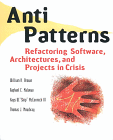
![]() Brown,William
J., Raphael C. Malveau, Hays W, III McCormick, William H. Brown, Thomas J. Mowbray.
AntiPatterns:
Refactoring Software, Architectures, and Projects in Crisis. John Wiley
& Sons, 1998.
Brown,William
J., Raphael C. Malveau, Hays W, III McCormick, William H. Brown, Thomas J. Mowbray.
AntiPatterns:
Refactoring Software, Architectures, and Projects in Crisis. John Wiley
& Sons, 1998.

![]() Bass,
Len and Paul Clements, Rick Kazman, Ken Bass. Software
Architecture in Practice (Sei Series in Software Engineering). Addison-Wesley,
1998.
Bass,
Len and Paul Clements, Rick Kazman, Ken Bass. Software
Architecture in Practice (Sei Series in Software Engineering). Addison-Wesley,
1998.
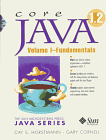
![]() Horstmann,
Cay S. and Cornell, Gary. Core
Java 1.2 : Fundamentals. (Sunsoft Press Java Series), 1999.
Horstmann,
Cay S. and Cornell, Gary. Core
Java 1.2 : Fundamentals. (Sunsoft Press Java Series), 1999.
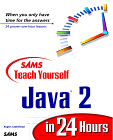
![]() Cadenhead,
Rogers and Taber, Mark. Java
2 in 24 hours. SAMS.net 1999.
Cadenhead,
Rogers and Taber, Mark. Java
2 in 24 hours. SAMS.net 1999.

![]() Landauer,
Thomas. The
Trouble With Computers: Usefulness, Usability, and Productivity. MIT Press,
1996.
Landauer,
Thomas. The
Trouble With Computers: Usefulness, Usability, and Productivity. MIT Press,
1996.
 Sutherland,
Jeff. Business Objects and the Evolution
of the Internet. In Zamir, Saba (Ed.) Handbook
of Object Technology. CRC Press, 1998.
Sutherland,
Jeff. Business Objects and the Evolution
of the Internet. In Zamir, Saba (Ed.) Handbook
of Object Technology. CRC Press, 1998.
 Burnham,
Bill. How
to Invest in E-Commerce Stocks. McGraw Hill, 1998.
Burnham,
Bill. How
to Invest in E-Commerce Stocks. McGraw Hill, 1998.
This book does a good job in providing information on all aspects of E-commerce in a well-organized, clear, and concise manner. Providing the reader with detailed, unbiased analysis of E-commerce subsectors with long-term outlooks, Burnham discusses not only the small and medium sized companies that are currently in the business, but also discusses the large established players in the industry and how they will affect the internet. Although he does emphasize the high-risk nature of these investments, Burnham elucidates the enormous growth potential that exists within this sector, encouraging disciplined investors to consider investing in E-commerce. The book is also very easy to read, with numerous charts and tables. In addition, the content is surprisingly current and up-to-date relative to other investment books, containing information up to June 1998. Furthermore, this book also provides the reader with a brief history of the internet, with an easy to understand outline of the internet infrastructure. Overall, this is an excellent book containing valuable information that I would highly recommend to anyone who wants to seriously invest in E-commerce and the Internet. Chirag Amin, M.D.
 Segaller,
Stephen. Video Nerds
2.0.1 : A Brief History of the Internet. TV Books Inc, 1998.
Segaller,
Stephen. Video Nerds
2.0.1 : A Brief History of the Internet. TV Books Inc, 1998.
Nerds 2.0.1 is a unique computer-history book, in that it is really a history of networking. Author Stephen Segaller covers all the current heavy hitters of the technology industry in depth: Novell, 3Com, and Cisco. In particular, the story of the creation of Cisco--and the ousting of the original founders by the sponsoring venture capitalist--shows the high-level stakes and intrigue this billionaire world holds. Segaller also chronicles the failures of companies who didn't realize what their programmers had made available to them. IBM, Xerox, and, some would say, Microsoft are big players in this part of Segaller's tale. The author puts technological developments in a helpful context: the infamous 100-hour Silicon Valley workweek, the "dog-year" life span of an Internet start-up, and the managerial shufflings of a sponsoring venture capitalist firm all make sense in the world he describes. --Jennifer Buckendorf